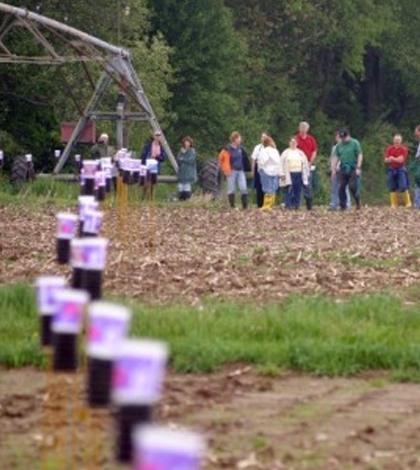Irrigation Schedulers, Soil Moisture Sensors Outpace Older Farming Methods

Researchers work to ensure accuracy and uniformity of irrigation. (Credit: Lyndon Kelley / MSU Extension)
Farmers have all sorts of old-fashioned methods for assessing the moisture of soil. From just visually inspecting crops to judging moisture based on how deeply a shovel can penetrate, farmers have found ways to get by. More recently, several advancements have offered farmers new alternatives to those old-fashioned approaches, including irrigation schedulers and soil moisture sensors.
Irrigation schedulers rely on estimates of evapotranspiration, or the loss of moisture that land and plants sustain from evaporation and transpiration. Soil moisture sensors offer a more direct measurement of the water that an area of land holds because they tap right into it.
An article from the Michigan State University Extension discusses some of the benefits that a Michigan farmer has found from using soil moisture sensors. The biggest one is knowing just how much moisture the land is holding at any given time — there’s no guesswork.
The farmer has a set of soil moisture sensors in each of his fields, one each at depths of 1, 2 and 3 feet. These have recorded measurements over a period of three years and provided a longer-term look at seasonal changes.
Top image: Researchers work to ensure accuracy and uniformity of irrigation. (Credit: Lyndon Kelley / MSU Extension)




0 comments